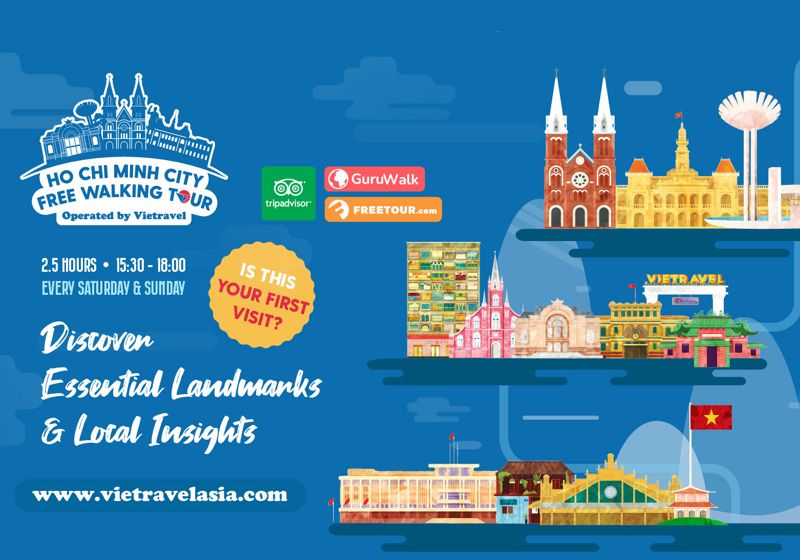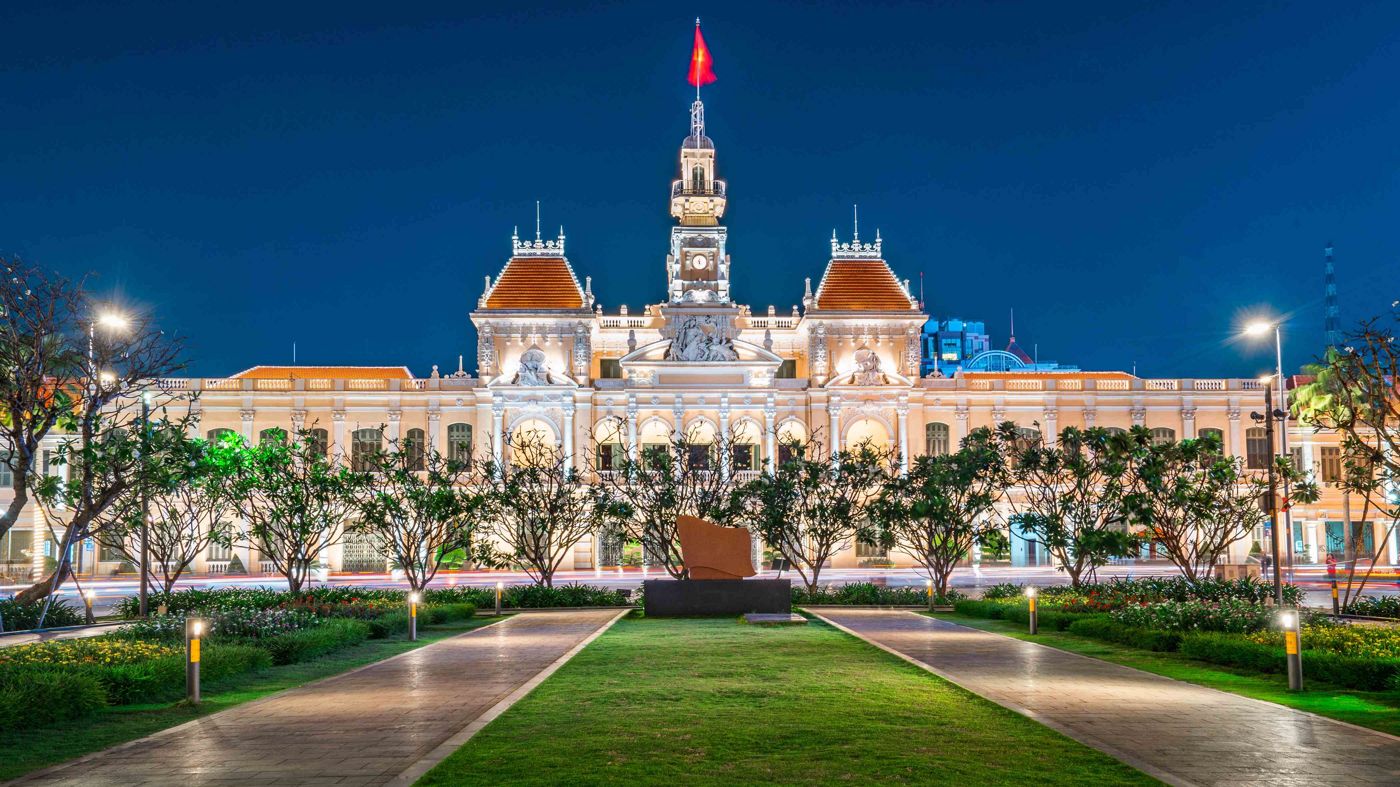
With its rich history and rapid development, Vietnam has a plethora of wonderful colonial and modern architecture. From French-colonial buildings to oriental structures to modern day skyscrapers, Vietnam certainly possesses a unique and diverse collection of architecture.
Landmark 81 Tower
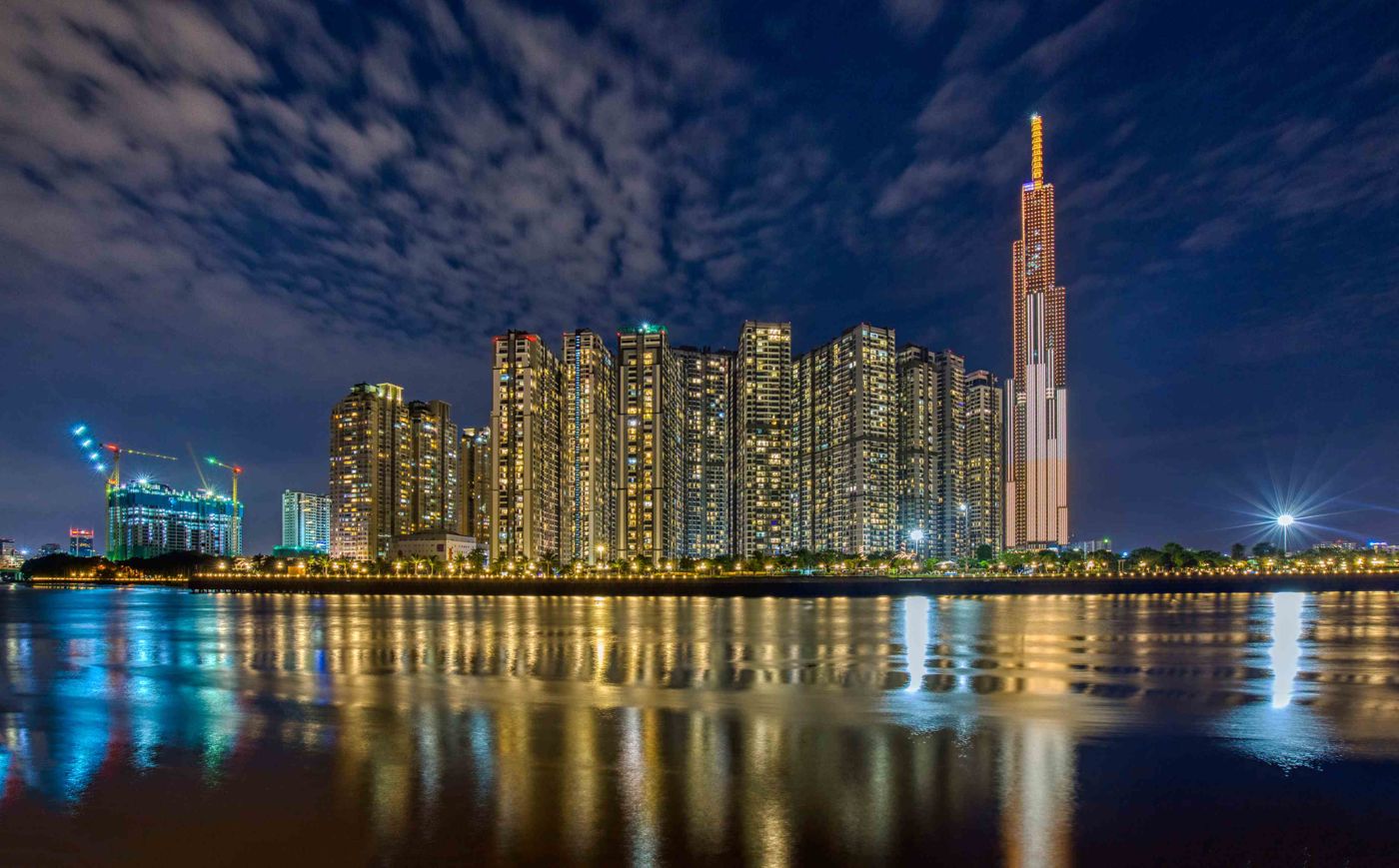
The Landmark 81 is an extremely tall skyscraper in Ho Chi Minh City that was designed by a British firm, Atkins, and funded and constructed by Vietnamese-owned corporations, Vingroup and Coteccons. Landmark 81 is the tallest building in Southeast Asia as of July 2018, and listed as the 14th tallest building in the whole world.
This building has 81 stories, making it 461.5 meters tall. It is located in the Vinhomes Central Park urban area, on the western bank of the Saigon River, next to the Saigon Bridge connecting District 2 and Binh Thanh District. The inauguration of this building is just the beginning. The entire development of the building and Vinhomes Central Park is still underway with a multi-use area consisting of high-end facilities. This includes a hotel, conference venues, luxurious apartments and condos, shopping centers, and food and beverage establishments. The tower also features a multi-story observation deck at the very top.
Saigon City Hall
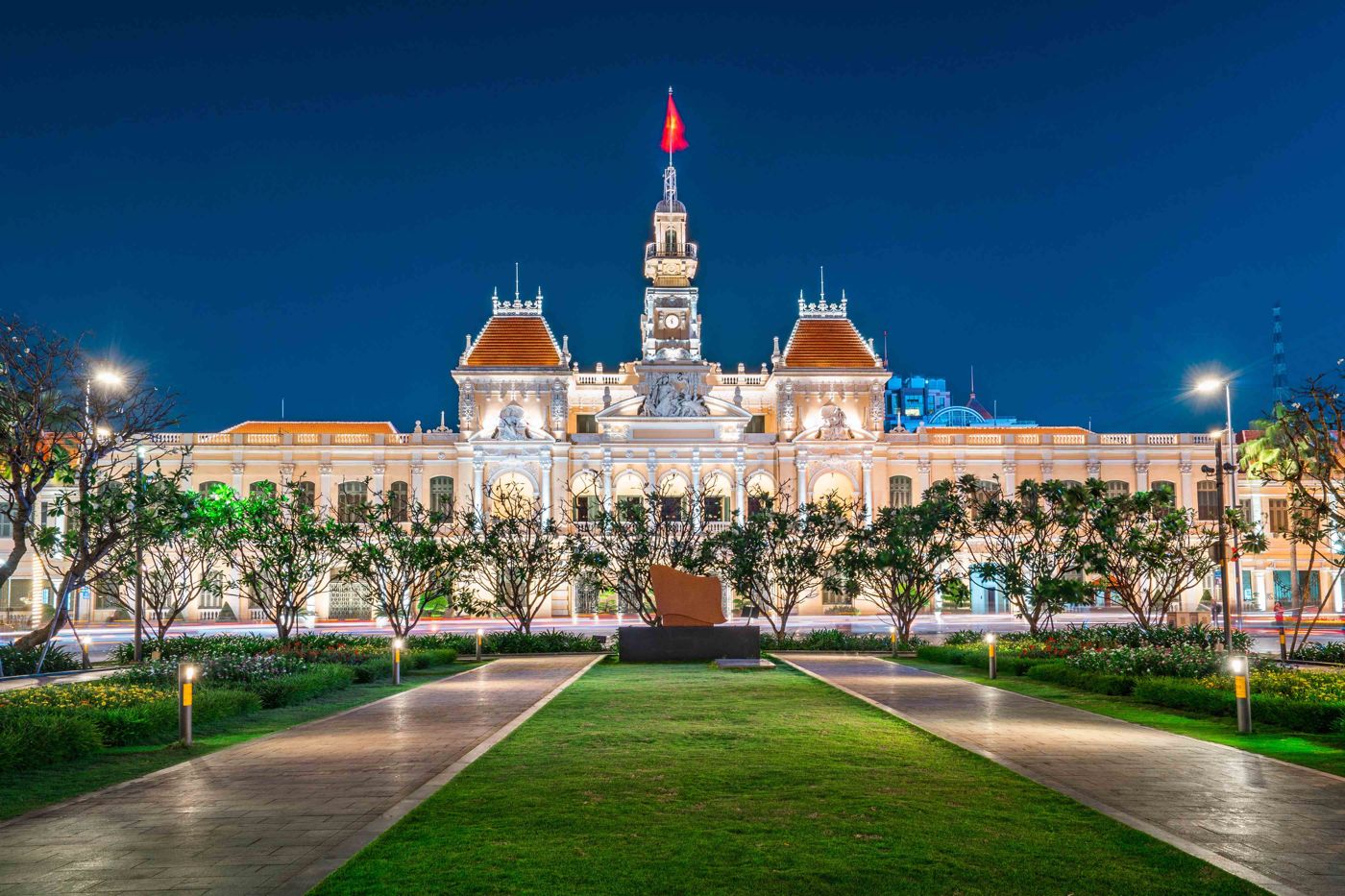
Saigon City Hall, renamed Ho Chi Minh City People’s Committee after 1975, started building in 1902 and was completed by 1908. It first functioned as a hotel before becoming headquarters for civil servants of the city. Saigon City Hall was designed by French architect Gardes and was modeled after the City Hall in Paris.There is a bell tower inspired by those in European town halls that marks the highest point of the structure. As of right now, Saigon City Hall is not open to the public, it still remains a must-visit landmark for tourists as the building and its grounds are illuminated at night.
Saigon Notre-Dame Basilica
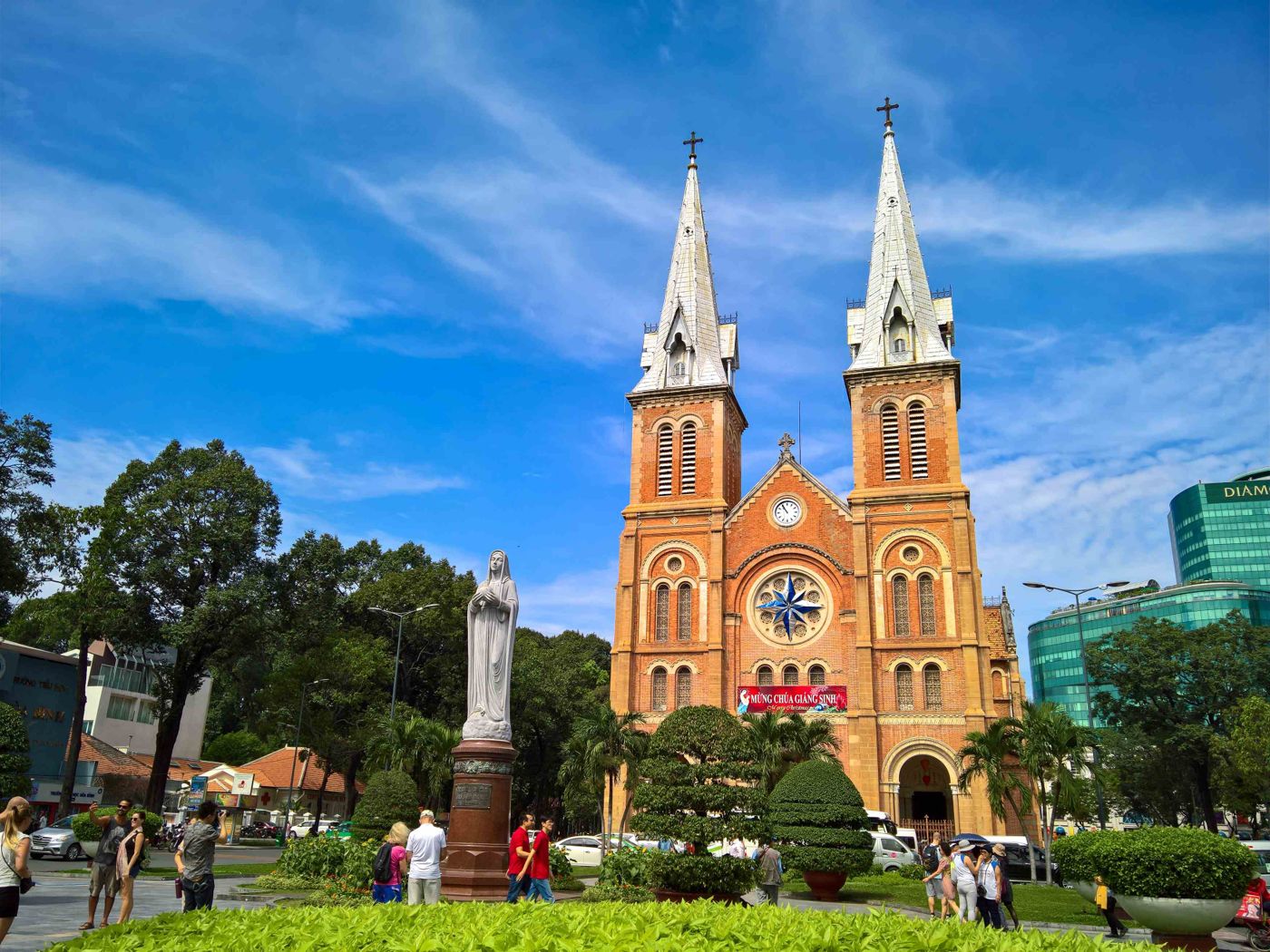
Notre Dame Cathedral, or Saigon Notre-Dame Basilica, designed by French architect Jules Bourard from 1877 to 1880 embodied the architectural sentiments of the period. It features the Romanesque style in its red-brick facade and granite base with Gothic style inside. The church was based on the model of Notre Dame de Paris and materials were imported from France, for example, the bricks came from Marseille.
Viet Nam Quoc Tu Pagoda
Vietnam Quoc Tu pagoda is located on February 3 Street, District 10, Ho Chi Minh City. This is one of the largest Buddhist temples in the city and is a relatively new one, built in the early 1960s, designed by Ngo Viet Thu.
The main complex of the pagoda spans seven stories, with the first two open to the public, an example of Vietnamese architectural principles. Visitors are given access to view the beautiful Buddha statue that is the centerpiece of the pagoda and allowed to walk the grounds.
Saigon Central Post Office
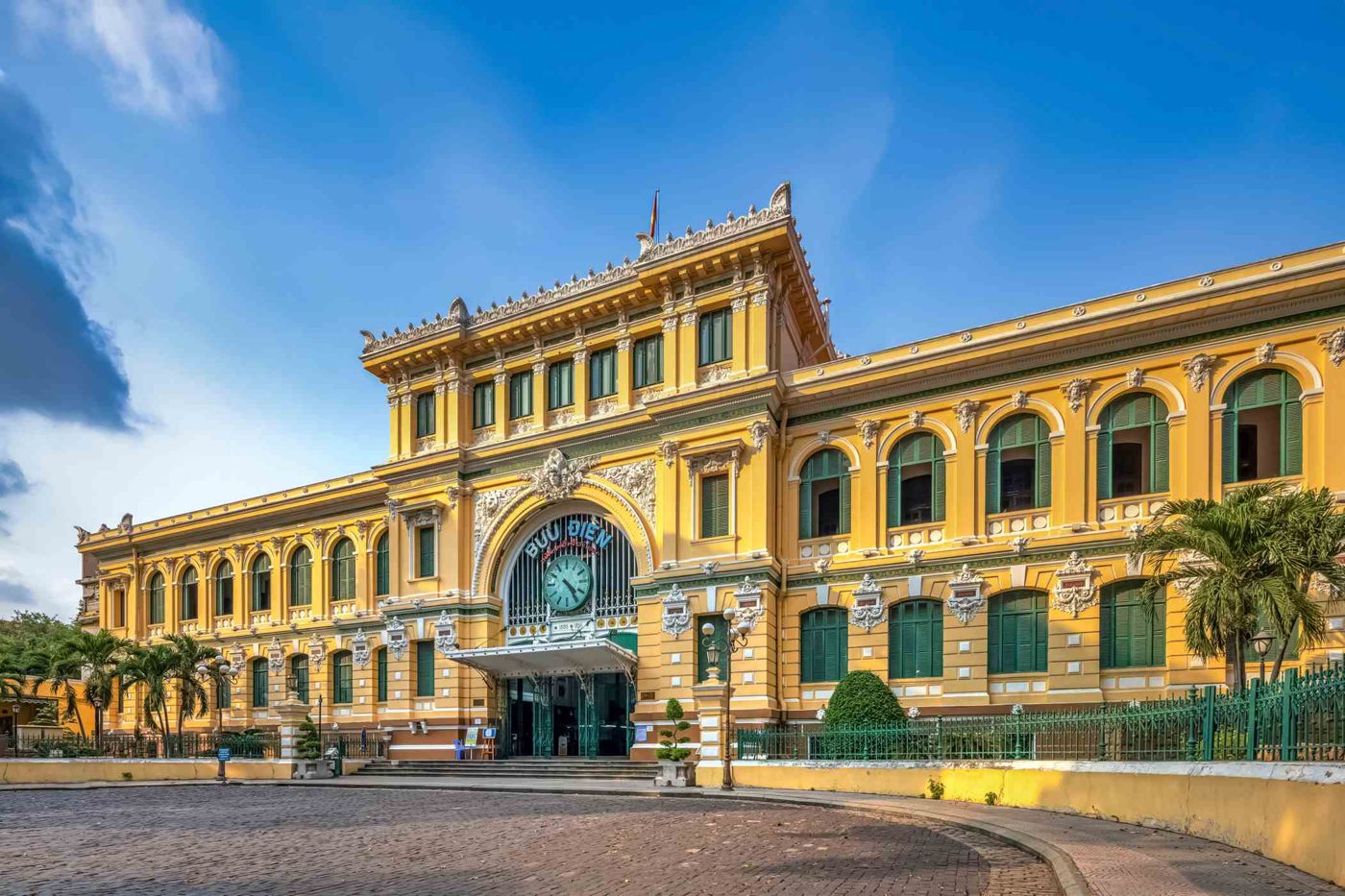
Saigon Central Post Office was built from 1886 to 1891 and designed by French architect Gustave Eiffel. With Gothic, Renaissance, and French influences that inspired the creation of this building, visitors who go inside will momentarily forget that they are in Vietnam. The post office has arched structuring, patterned flooring, and high ceilings.
There are two noticeably large antiquated maps inside, Saigonet ses environs (Ho Chi Minh City in the past) and Lignes telegraphiques du Sus Vietnamet du Cambodge (postal route of Vietnam to Cambodia). Saigon Central Post Office is perhaps the busiest post office in the city, as people regularly venture in to see the grand architecture, come in to mail their letters, and buy postcards and stamps.
Bitexco Financial Tower
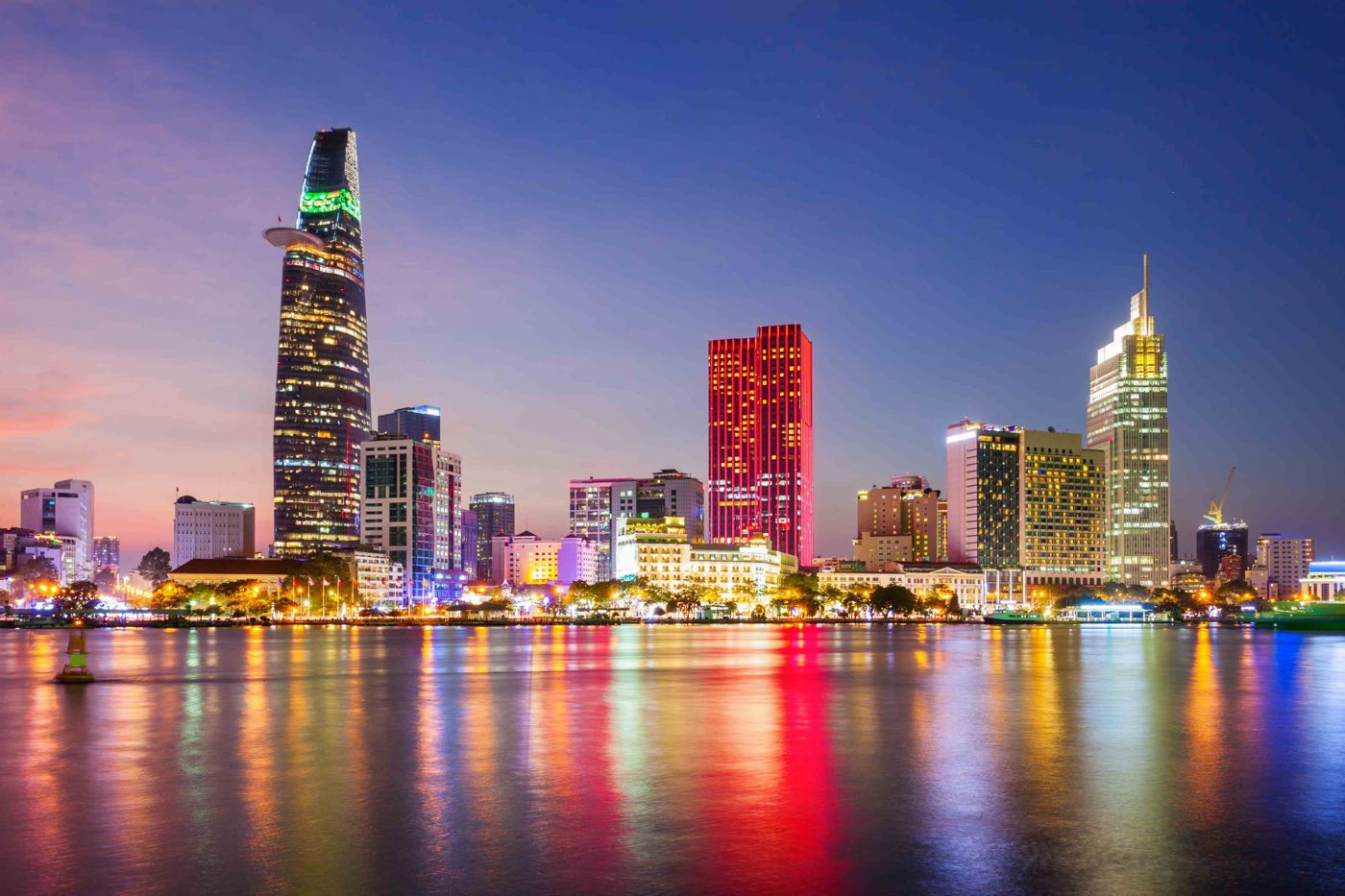
Bitexco Financial Tower is one of the tallest buildings in Saigon, with 68 floors and a height of 262.5 meters. It was designed by New York based architect Carlos Zapata. He was inspired by the shape of a lotus, Vietnam’s national flower, to form the leaf-like curve of the tower. On the 52nd floor, there’s a helipad that was designed to resemble a blossoming lotus bud. Bitexco was considered one of the 25 Great Skyscraper Icons of Construction by CNN.
Saigon Opera House
The Saigon Opera House is an elegant colonial building at the intersection of Le Loi and Dong Khoi Street in District 1, very close to the famous Notre Dame Cathedral and the classic Central Post Office. The restored three-storey 800-seat Opera House was built in 1897 and is used for staging not only opera but also a wide range of performing arts including ballet, musical concerts, Vietnamese traditional dance and plays. Performances are advertised around the building and information can be found in the state-operated tourist information center nearby.
Source Internet

